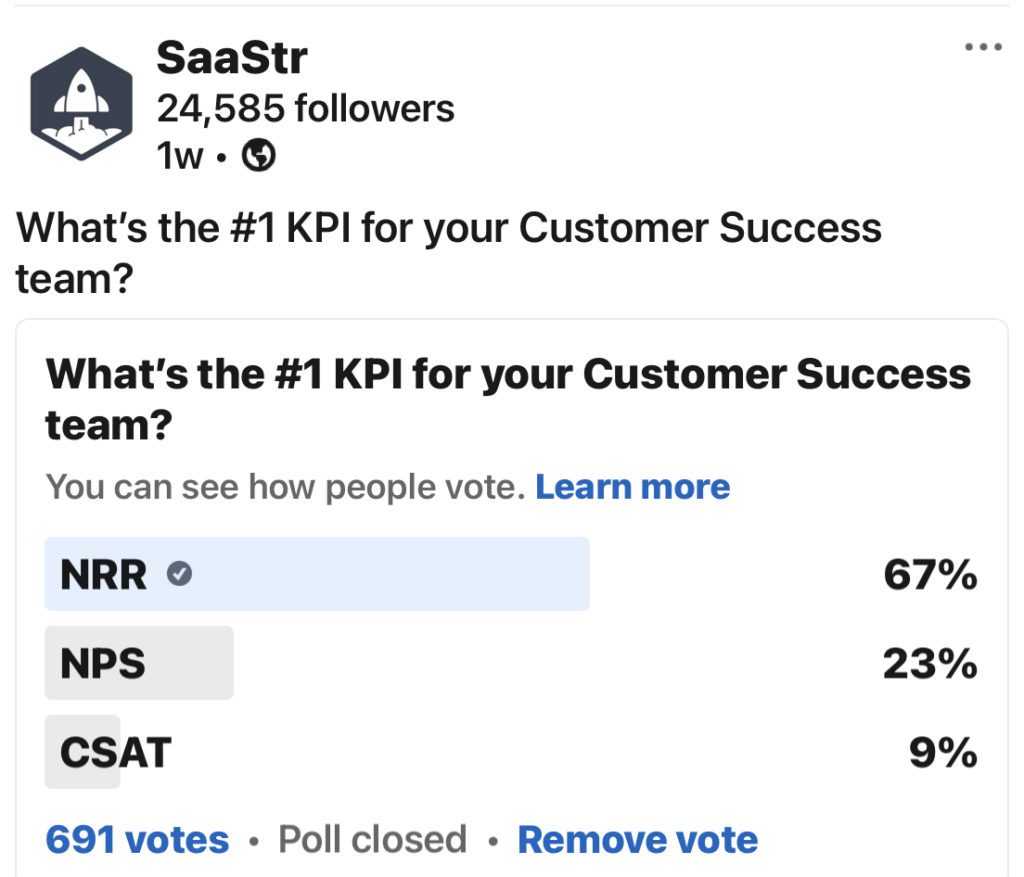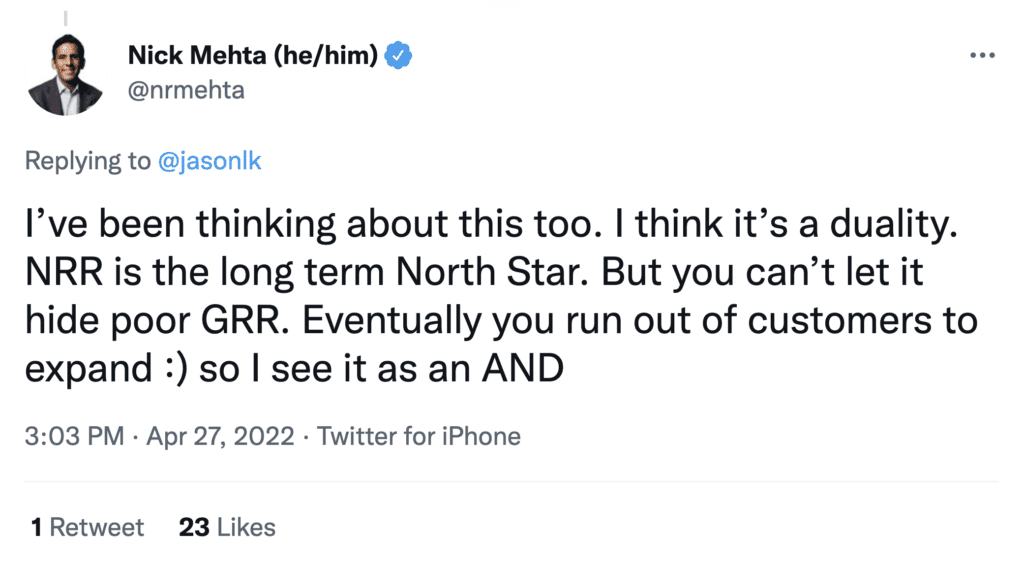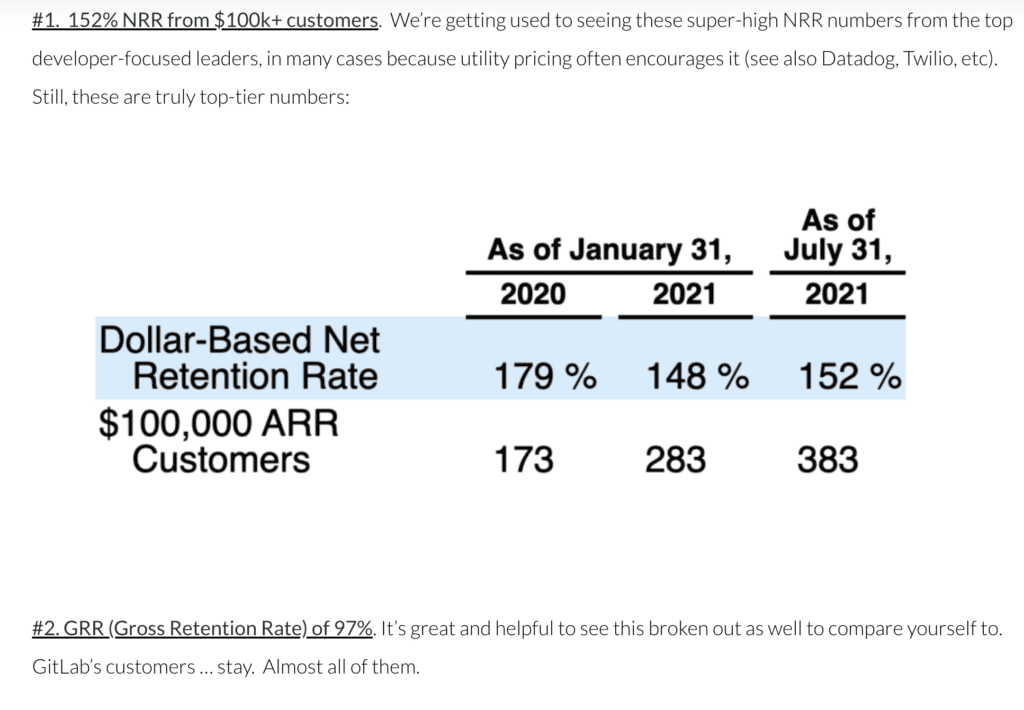
Ok, this may seem like an odd post on SaaStr. We’ve talked for 10 years about the power of compounding, recurring revenue. Even back when it wasn’t really understood well. Our second SaaS blog post ever, in 2012 (updated after) was “Want to Understand SaaS? If Nothing Else — Understand That It Compounds”, after all.
And we religiously track the NRR of all public cloud and SaaS leaders in our 5 Interesting Learning series. It’s epic NRR that has fueled UiPath, Twilio, Snowflake, and so many other Cloud leaders.
High NRR is the key to the magic in SaaS. It’s the engine that lasts decades, and fuels growth to far bigger levels, than you might even think possible in the early days.
So don’t get me wrong — NRR is a Top 3 Metric for any SaaS company. For sure. 100%. Low NRR is a flag, a canary in the coalmine. And high NRR is a gift. But — it’s one that that is best not neglected.
It’s just — should you measure your CS team on it? I’m no longer so sure. Especially after interviewing 50+ customer success managers over the past few years.
Why not? I’ve found one trait in too many of these 50+ CS individual contributors I’ve recently interviewed. Not VPs, but ICs and some managers. So many of them coming out of high NRR environments are — lazy. Often lazier than most anyone in sales, even the sales reps that really only work 20 hours a week (look, we’ve all seen lazy sales reps). Lazier than the smart engineers that sort of phone it in a bit. Maybe even lazier than marketing managers that don’t own anything or have any KPI or goal to own, although maybe not here.
Ok so lazy is a pretty loaded term. And I don’t mean to be triggering here — apologies. I bring it up because it’s important and instructional. Why do high NRR SaaS companies have lazy CSMs? And more importantly, what do I mean by “lazy”? What I mean is:
- They don’t want to own anything. They often have very low show rates at their QBRs. I recently asked a mid-level CS rep how many of his customers showed up to his QBRs. He said “one”. I asked him why just 1 came. He didn’t really know. But he said he thought QBRs were great.
- They just want to parachute in and solve problems. That sounds great, but it’s not. It’s not remotely proactive. And it becomes an excuse to not do the real work before there is an issue.
- They often are hard to reach and slow to respond. Hmmm.
- And importantly — importantly — they don’t sweat churn too much if the NRR goal is still being met. Lost a few customers? Well, so what if BigCo just added another 1,000 seats. That more than makes up for it. In High NRR environments, I just don’t see CSMs below the VP level sweat logo churn.
Why is this? Why?
A partial reason is poor training, which is a fair point, and something we can dive into in a subsequent post. But beyond that …
But mostly I think it’s just incentives. It’s the goal and KPI you pick, and what you tie variable comp to. The thing is in SaaS, if your product is pretty good and it has a strong market position, you’ll end up with decent NRR even with a mediocre Customer Success team. It’s true. And as your CS team scales, any individual rep may not be able to influence overall NRR all that much.
Put differently, a CS team might coast if the goal is 120% NRR and basically the product itself, together with the sales team, sort of gets you there already. I know many will disagree, but I see this all the time now. CS folks that just sort of want to “hover” these days, and not really own anything. And coast on inherently high NRR.
Yes, you can set goals to increase NRR per segment and that works a bit better. You can give a CSM a patch of customers and tell them to increase the NRR, and if the NRR is low, it can be a real motivator to drive it up, no doubt. But again, if the NRR is already high in the app, there often is no real pressure to move the needle.
Group NRR goals are often still a murky goal, as much influenced by product, market dynamics, and sales as success. And it doesn’t put retention as goal #1.
More and more, I’m thinking GRR should be the #1 goal for the individual CS members. Your gross revenue retention — what % of the revenue base a CSM has at the start of the year that you retain, before upgrades and growth. Or logo retention as a metric can work as well, especially in B2D and other models that grow a lot over the year on their own. And then … let NRR be an overall goal for the company, and your VP of CS. Individual CSMs can much more influence retention and GRR than NRR. Their job just becomes: Just. Don’t. Lose. The Customer.
Look at GitLab. Yes, their NRR is strong at 152%. But their GRR is 95%. Now, that’s even more epic — and the fuel for sustained growth. No one leaves GitLab. No one:
If you move from NRR for your CSMs to GRR or Logo Retention, then keeping your customers becomes Job #1. Folks just plain work harder when their job is on the line if they lose too many customers. And perhaps not as hard as when the goal is sort of, sometimes … already in the bag.
Something at least to at least think about. Incentives matter — in every role. Not just sales.
A bit more here:
And a great discussion Kyle Porter, CEO of Salesloft, and I had on GRR here:
And some deeper thoughts from Nick Mehta, CEO of Gainsight here:
And some great thoughts from Ramya Ragavan, VP of CS at Any Road here:





